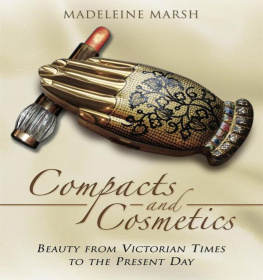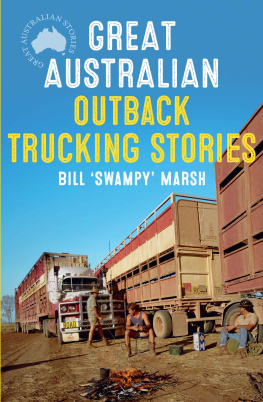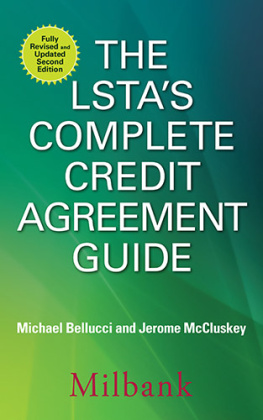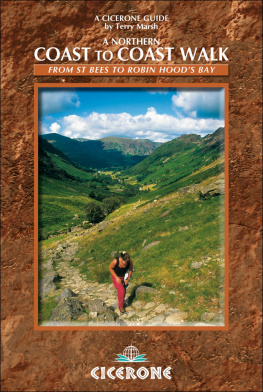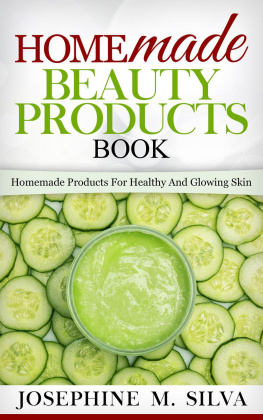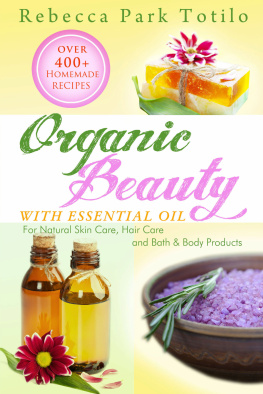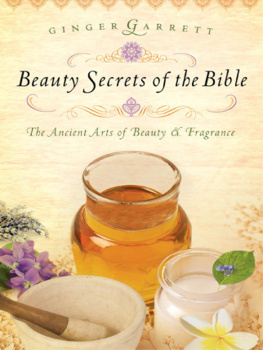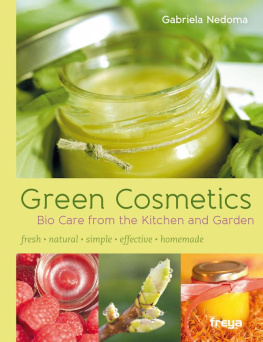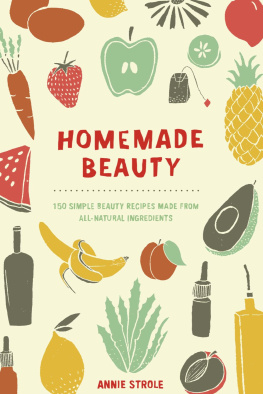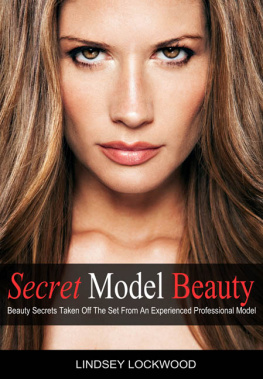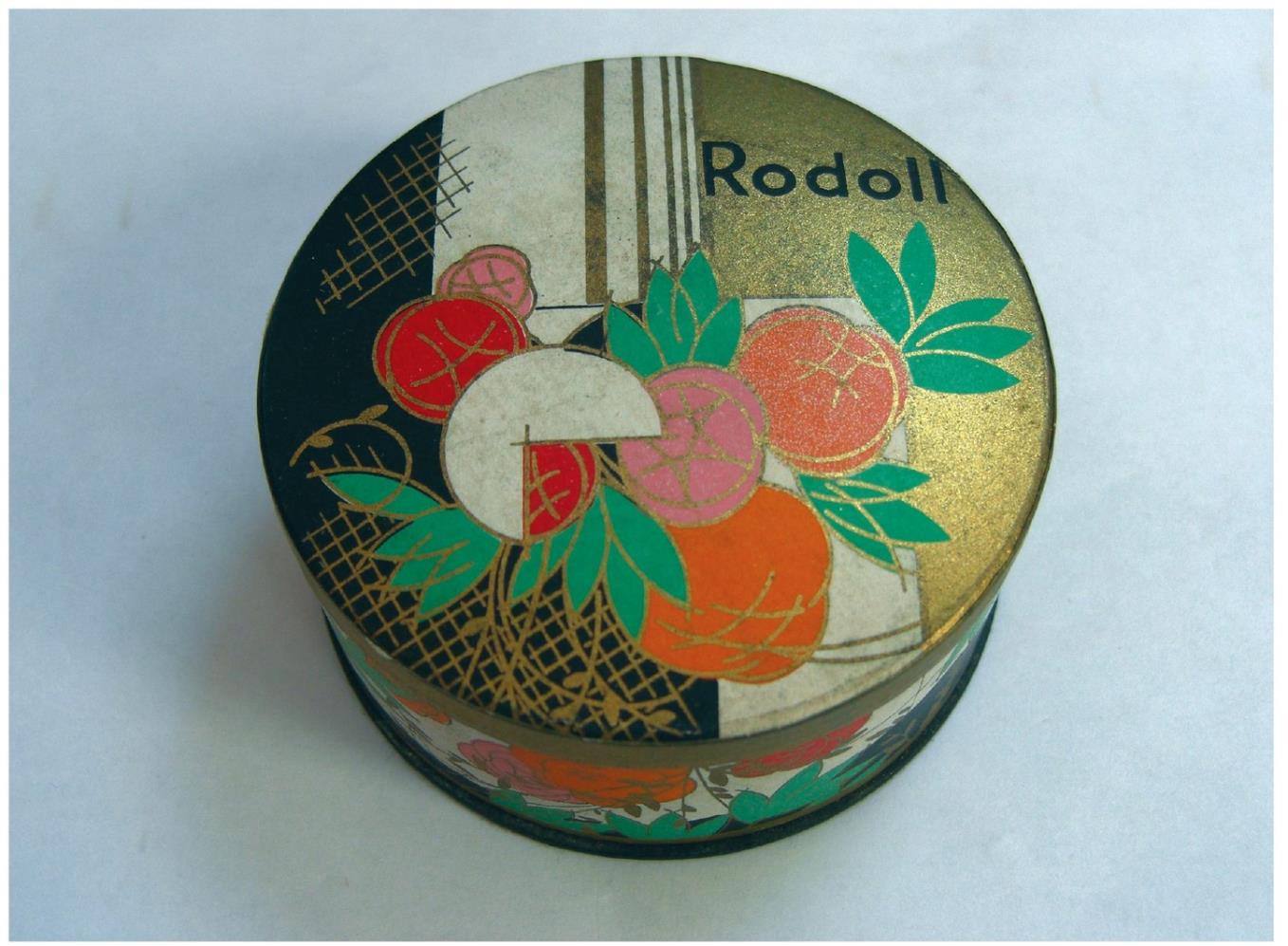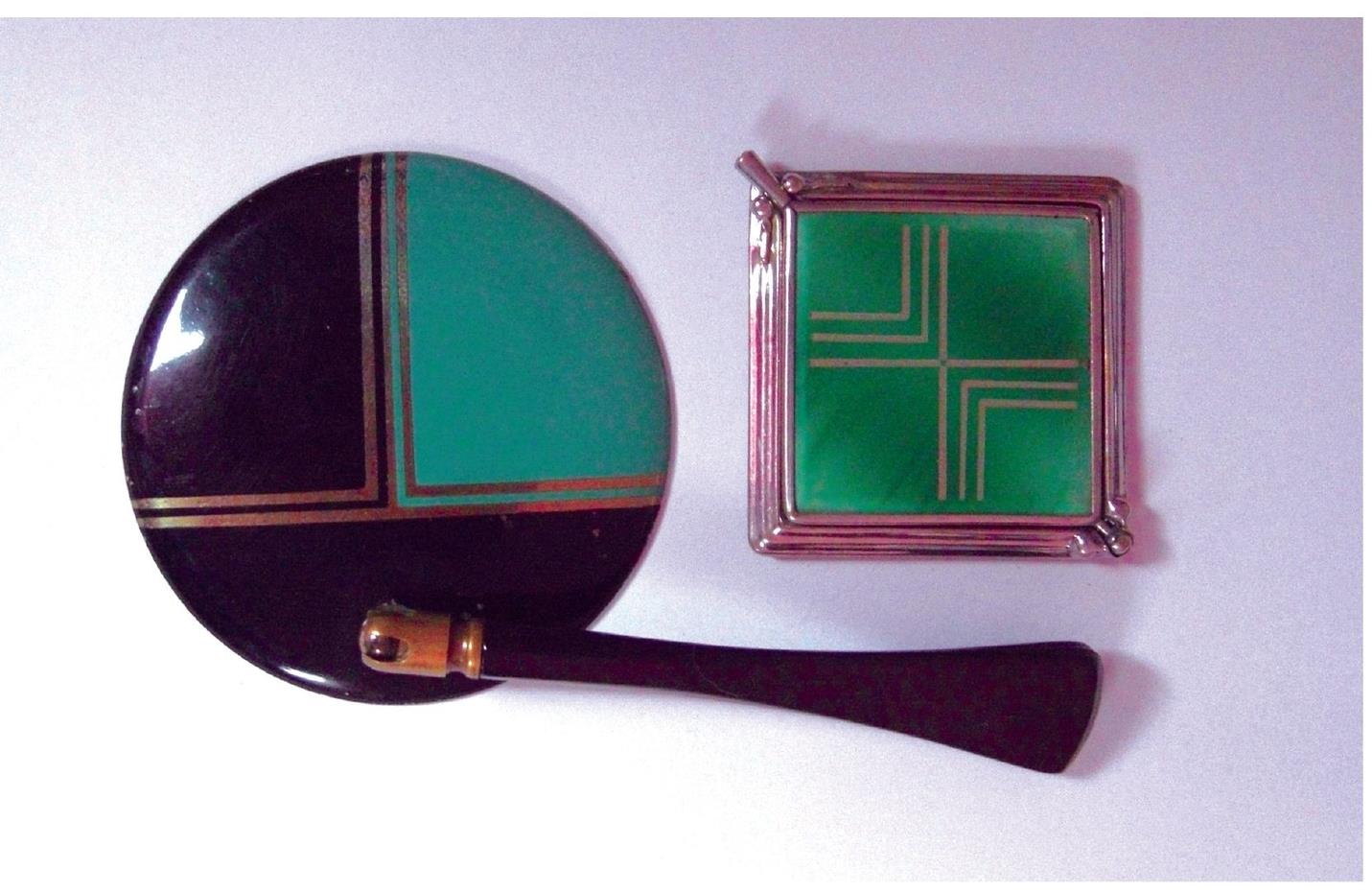Collecting and learning about objects is a collaborative process. I would like to thank the many women (and some men) who shared their make-up memories with me. I am grateful to family and friends who ransacked drawers and bathroom cupboards to contribute to my collection. Thanks are due to the staff at Chelsea Library (a user-friendly treasure trove of fashion journals) and to the dealers who gave me generous help and advice, in particular Linda Bee and Grays Antiques Market in London. Invaluable assistance was also provided by Matthew Blurton, Roger Hyams and John Arcedeckne Butler.
Lipstick kisses to all concerned.
APPENDIX
Buying Beauty
Collecting Compacts and Cosmetics
T HIS BOOK IS predominantly illustrated with pieces from my own private collection. One of the joys of collecting cosmetic accessories is that they encompass a wide range of objects and media, from elegant powder compacts to humble deodorant tins, from Victorian silverware, to modern plastics. Some subjects are well-established collectables, others less so. A 1930s lady shave or a pair of 1960s false eyelashes might not be as valuable or attractive as a fine art deco vanity case but for me they are just as representative of their times and what women did to their bodies. Paradoxically, it is often the more mundane items that are hardest to track down, both because few people bothered to keep them in the first place,and admittedly not that many want to buy them today!
Rodoll powder box, by P.Giraud, Paris, sealed with original powder, 1930s.
The Laleek Wax-a-Way Hair Remover by Adelaide Grey, Bond Street London, c.1940. The perfect example of a random eBay purchase and surprisingly affordable precisely because it has a very niche market.
Collecting advice in specific areas is included below, but some tips apply equally to every subject. Antiques-related TV programmes and newspaper articles often tend to focus on value, but as most enthusiasts know collecting is above all about passion (some unkind members of my family also refer to it as madness). Whatever your chosen area, the most important advice is to buy what you like and what stimulates your eye and brain.
Condition is a major factor and when possible it is always a good idea to purchase the best and most complete example that you can afford. Sometimes however you will have to compromise and buy something in what vendors often euphemistically describe ascondition commensurate with age. Seriously damaged pieces should be avoided, but rarities should not be overlooked because of a little wear and tear.Though value might be affected, it doesnt make the object any less interesting in historical terms and it also means that there can be less anxiety involved in displaying or even using it.
In forming my own collection, I have bought everywhere from antique markets to car boot fairs. A small number of dealers specialise in beauty-related items most typically compacts and perfume bottles. Vintage fashion fairs are a good venue for cosmetic material as are dealers in advertising and packaging. eBay is a useful source but caution is always necessary when you are bidding for something you cant see or touch. Check the vendors feedback, examine descriptions and photographs carefully, and if you are not happy with an item; send it back! Having said that, eBay is wonderful for finding more unusual pieces from vintage mascaras to flapper curling tongs; you can shop across the world at the press of a button and if you know what you want, ultimately youll probably come across it.
Brass lipstick caddy in the form of a swan, c.1950s/60s with a selection of vintage lipsticks.
The more you learn, the better you will buy and the more you will appreciate your collection. Consult reference books, and the internet is a boon for checking prices, making contacts and tracking down information. Nothing however beats seeing as many objects in the flesh as you possibly can. Visit antique fairs, talk to dealers and fellow enthusiasts and if there is one join a collectors club. Though cosmetics are not a typical museum subject, fashion galleries will sometimes include related material as will collections devoted to advertising and packaging or popular culture.
Collecting is a learning curve and above all its fun. Hunting down objects is exciting and you never know what you will discover and whom you will meet. Owning them is also a pleasure. Some enthusiasts keep their treasures carefully packed away in acid free tissue to protect them from light and damage, but as far as I am concerned if you cant see your collection, and share it with your friends, whats the point? The main thrust of my own passion is everyday beauty accessories used by women of the past,and I display them on the shelves of my study, where they can be can be enjoyed, everyday, by a woman of the present.
Goya Liquid Beauty tin advertising sign, 1950s.
Perfect packaging: Arbutus Complexion cream by Harmony of Boston, mint and boxed; Sweet Pea talk tin by Lander, New York.
Art deco compact and mirror 1930s.
Mascot lipstick and pill box mint and boxed, 1960s.
Powder Compacts
Compacts are a well-established collectable. There are collectors clubs both in the US and the UK and specialist reference books (see bibliography). As with all antiques, values depend on age, medium, design, maker and above all rarity. Unusual novelty designs and compacts in precious metals by big name jewellers typically command the highest prices: Salvador Dalis famous Bird-in-Hand compact recently fetched 1,800 at auction; in 2004 Sothebys sold a Van Cleef and Arpels minaudiere for just over 6,000. Only a very limited number of pieces however will be worth four figure sums.At the other end of the scale, simple vintage compacts can be picked up for 10 or less; much is available for under 100, and even the more unusual designs are often priced in the low hundreds.
Some enthusiasts collect compacts of every style,others might focus on works from a particular period or by a certain maker. Compacts in interesting shapes, or decorated with popular themes such as ballet or animals (especially dogs) are perennially in demand.Certain pieces for example military or golfing compacts will have a crossover appeal to collectors in other areas which can make them more desirable.

